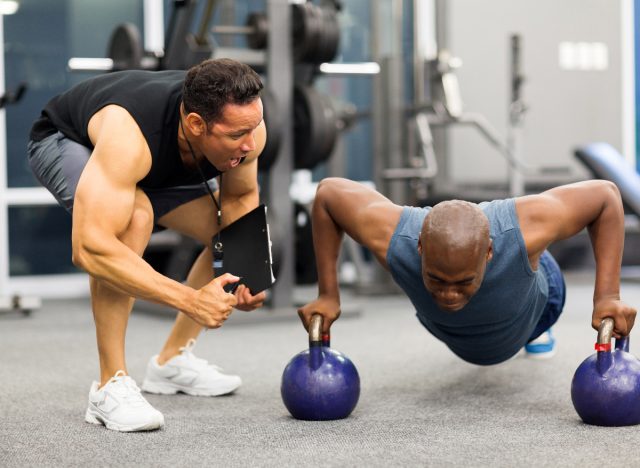Strength training is essential—especially as you age and the natural loss of muscle mass ensues. As long as you work out regularly, you will build strength and be on a good track, right? Wrong! There are many popular strength habits that may be destroying your gains, and you don’t even know it. To learn what these common “bad habits” are when it comes to your workout, we spoke with Luke Jones, a certified personal trainer at HERO Movement.
Luke tells us, “It’s worth noting that not every phase of training has to be about progressing. You might train for enjoyment, maintenance, or stress relief—all totally valid. But if building strength is the goal, small tweaks in load, reps, tempo, or complexity help stimulate the adaptation and growth you’re after.”
One point that’s noteworthy is that not every phase of working out needs to progress. It’s perfectly fine to train for maintenance, to relieve stress, and for your enjoyment. But if strength building is your mission, it’s crucial to be mindful of your reps, speed, load, and the difficulty of your workout in order to help kick up the muscle build you’re looking for.
With that in mind, let’s delve into the common strength training habits you may be doing with good intentions, but may actually stall your progress over time.
Performing the Same Sets and Reps


It’s always a good idea to switch things up in your workout routine.
“Our bodies respond best when the stimulus shifts slightly now and then—whether that’s more load, slower tempo, shorter rest period or just a different rep range,” Luke says. “It doesn’t mean we have to be improving every single session—it’s more about the long-term trend.”
Prioritizing Quantity Over Quality


If a movement isn’t performed with good form, why bother?
“Getting stronger usually means lifting heavier at some point, but ideally not at the expense of movement quality,” Luke points out. “There’s a time and place for chasing PBs, and it can be fun to test yourself now and then. But going all out all the time takes its toll, so I’d much rather see people prioritizing technique, recovery, and incremental progress.”
RELATED: 6 Fat-Burning Moves That Burn More Than 45 Min of Cardio
Skipping the Small Stuff


Don’t forget the little guys! Every part of your workout is important, so don’t take shortcuts.
Luke explains, “Big lifts are great—they’re fun, rewarding, and often get center stage. But they’re not the full story. Mobility work, shoulder stabilization, and accessory movements can make a real difference to how we move, how we feel, and how long we can keep doing it all. You don’t need to go overboard—just enough to keep things ticking over.”
Not Having a Plan or Structure


Anything you jump into without thinking about is a total time-waster—and that includes your workout plan.
“Training without any structure—whether it’s progression, variety, or planned recovery—can work for some, but for others leads to overwhelm and a loss of motivation,” Luke tells us. “A bit of forethought, whether that’s following a program, working with a coach, or even just choosing when to push and when to back off, can make a big difference. It doesn’t need to be complicated to be effective!”
Not Prioritizing Recovery


Proper recovery time after a workout is just as important as the workout itself.
“Pushing hard every session is often touted as the best way to train, but the reality is that going all out all the time isn’t sustainable,” says Luke. “It’s in the rest between sessions—sleeping, recovering, taking care of ourselves—where the real rebuilding happens. A little attention to the basics, like nutrition and managing stress, can go a long way in helping you get more from the work in the gym.”
Alexa Mellardo
Source link

